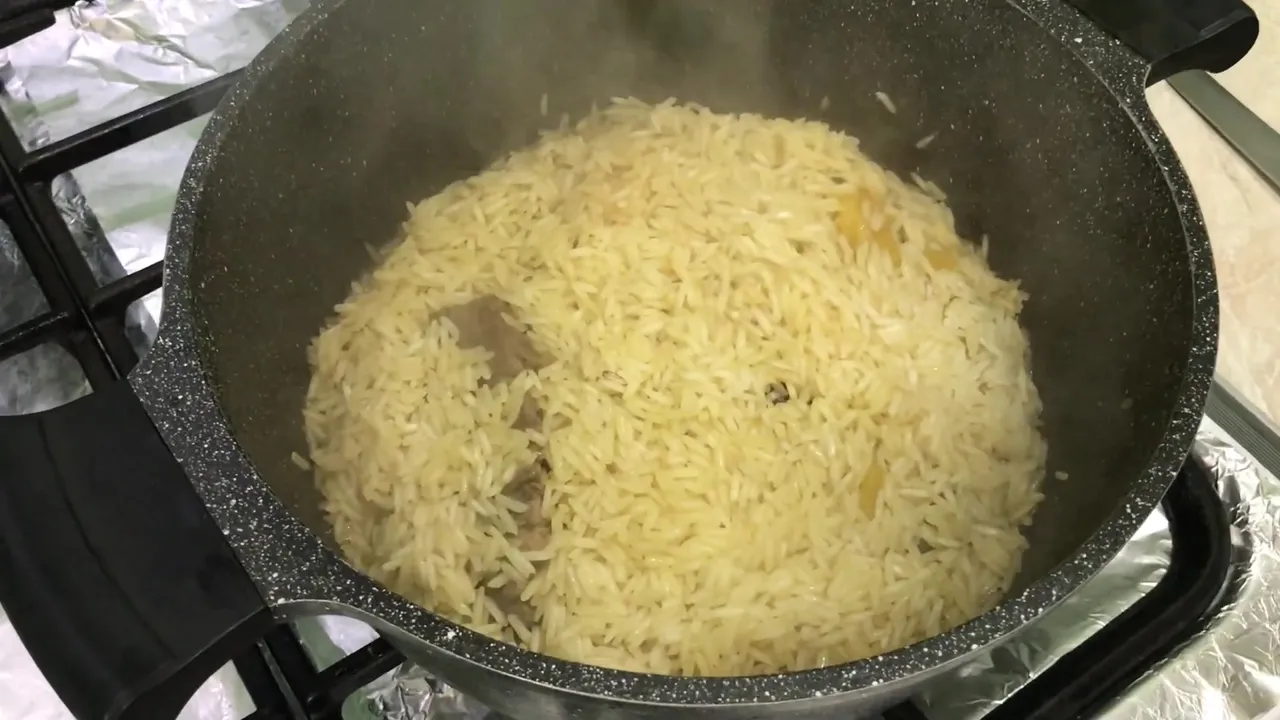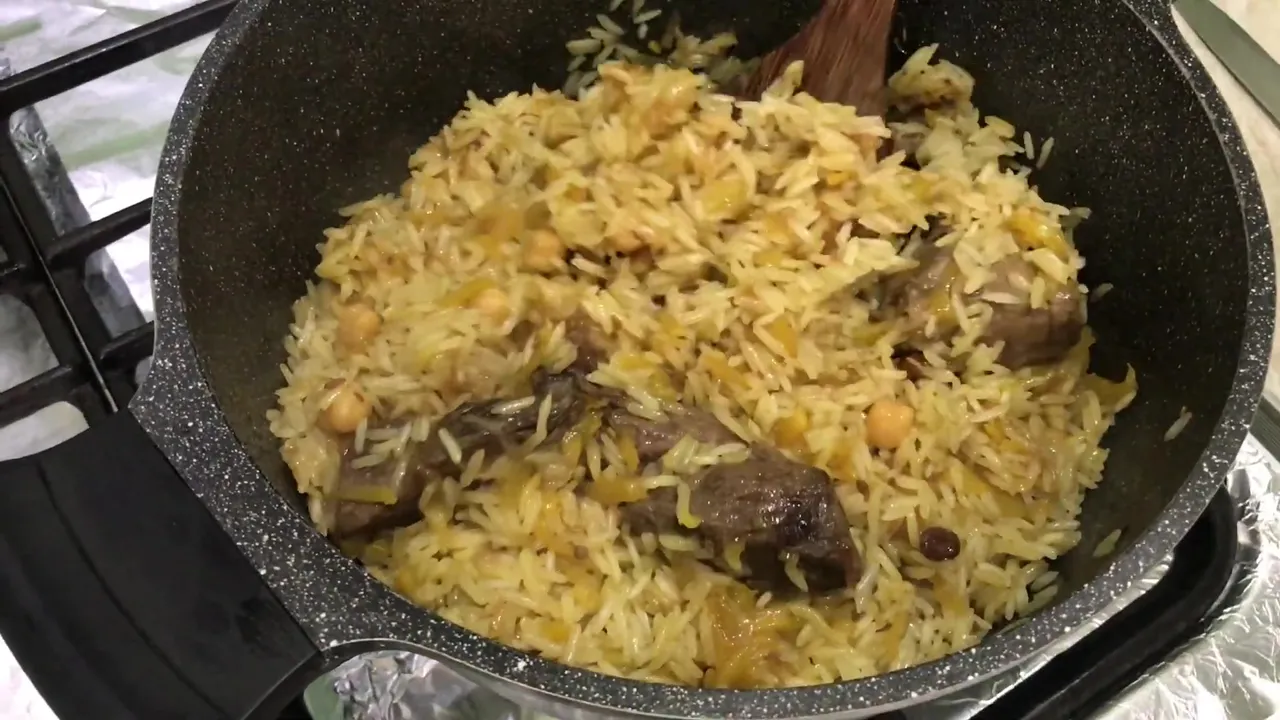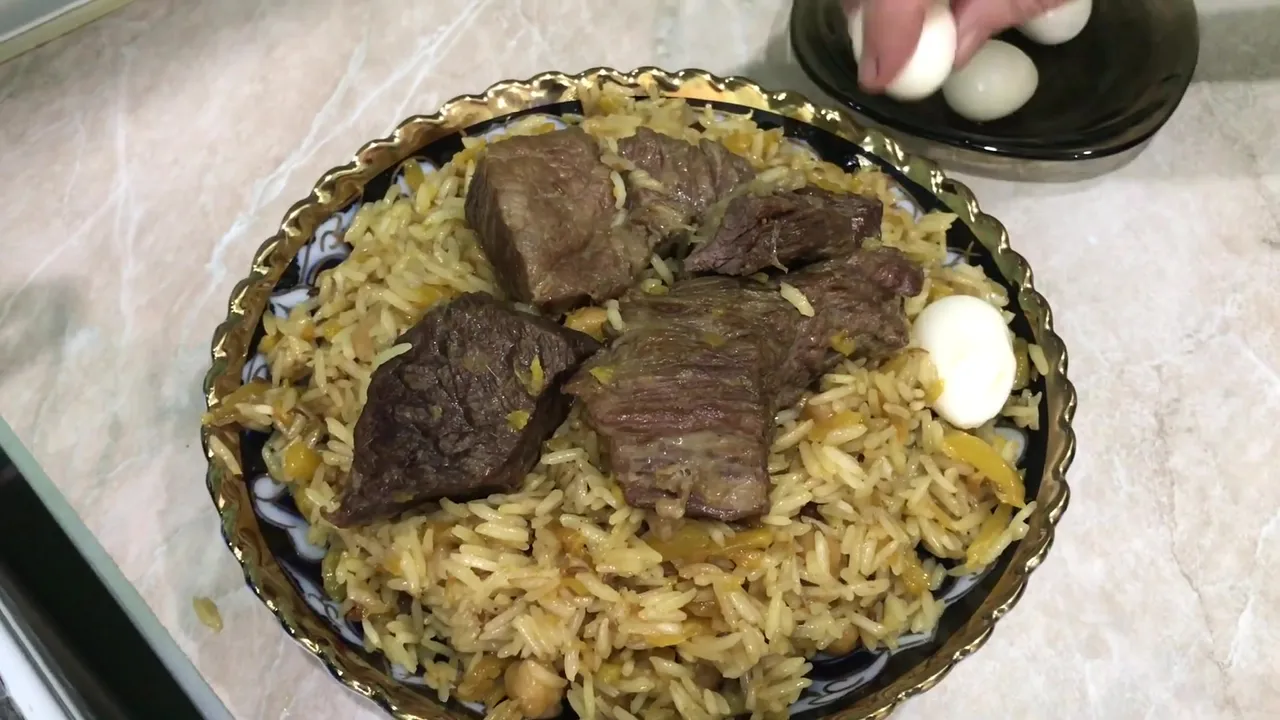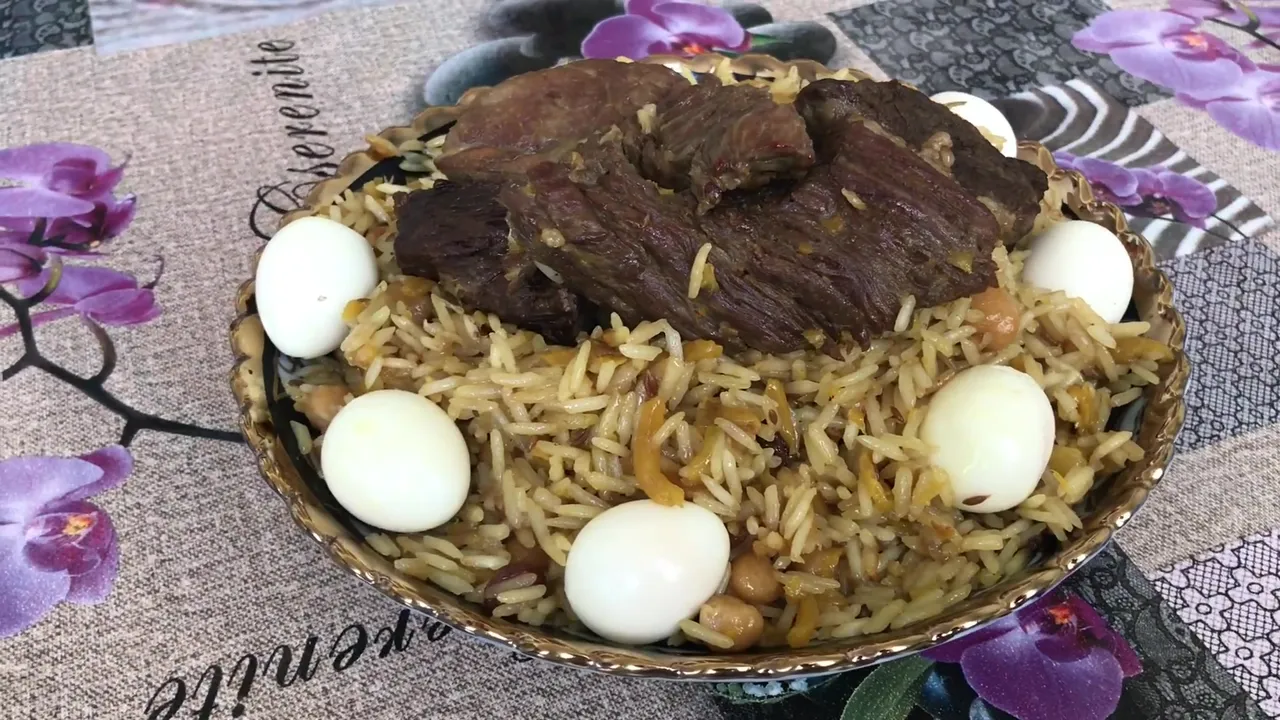
Pilaf is perhaps one of the most delicious dishes of Uzbek cuisine. Not a single event can do without pilaf, so every housewife should be able to cook it.
Pilaf recipes are different, depending on the cities of Uzbekistan. But the most popular is the teahouse (this is a kind of restaurant where only men meet with friends, relatives, and pilaf is cooked only on a fire in large volumes) pilaf and tashkent!
Today I will share with you a recipe for Tashkent pilaf.
> Pilaf es quizás uno de los platos más deliciosos de la cocina uzbeka. Ni un solo evento puede prescindir del pilaf, por lo que todas las amas de casa deberían poder cocinarlo.
Hay diferentes recetas para pilaf, dependiendo de las ciudades de Uzbekistán. Pero el más popular es la casa de té (este es un tipo de restaurante donde solo los hombres se reúnen con amigos, parientes y el pilaf se cocina solo en un fuego en grandes volúmenes) ¡pilaf y Tashkent!
Hoy compartiré con ustedes la receta de Tashkent pilaf.
Ingredients:
350 gr meat
400 gr rice
4 pcs of stamps (approx. 0.5 kg)
2 pcs. medium bow
50 gr chickpeas
50 gr quiche-mish
1 teaspoon of zira
1 teaspoon turmeric
1-2 teaspoons of salt
1 ladle of vegetable oil (200 grams, in Uzbekistan they prefer to use cottonseed oil, but if you do not have such an opportunity, it is preferable to use good quality sunflower or corn oil!
Ingredientes:
350 gr de carne
400 gr de arroz
4 piezas de sellos (aprox. 0,5 kg)
2 piezas arco medio
50 gr de garbanzos
50 gr de quiche-mish
1 cucharadita de zira
1 cucharadita de cúrcuma
1-2 cucharaditas de sal
1 cucharón de aceite vegetal (200 gramos, en Uzbekistán prefieren usar aceite de semilla de algodón, pero si no tienes esa oportunidad, ¡es preferible usar aceite de girasol o de maíz de buena calidad!
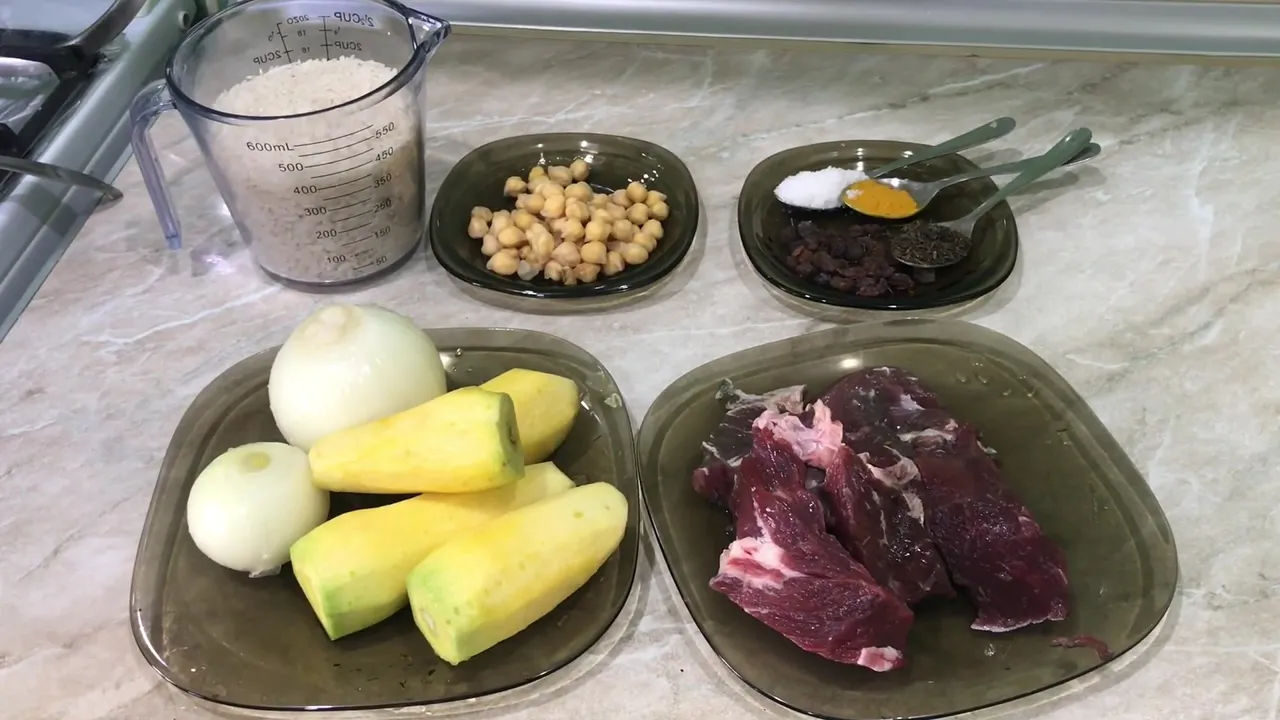
Tips:
We recommend using corn oil for cooking pilaf, as it has a lot of advantages. It is well suited for frying, as it does not foam, does not form carcinogens, does not burn and has a high smoke point, that is, it begins to burn only at very high temperatures.
When frying in such oil, the meat acquires a golden crust and remains very juicy inside.
And also corn oil has absolutely no foreign smell.
The main chickpea is a very hard food and therefore usually chickpeas are cooked separately, that is, you will have to soak the chickpeas in water and add quite a bit of tea soda there and leave for two 12 hours at room temperature! And after already, cook for about 2 hours on medium heat! During cooking, it will foam, and you will need to remove the stump and continue cooking! And only after that, you can add this chickpeas to pilaf!
I also advise you to buy rice of good quality in which there are no debris! It depends on rice that you get pilaf or porridge like pilaf!
Consejos:
Recomendamos usar aceite de maíz para cocinar pilaf, ya que tiene muchas ventajas. Es muy adecuado para freír, ya que no hace espuma, no forma carcinógenos, no se quema y tiene un alto punto de humo, es decir, comienza a arder solo a temperaturas muy altas.
Al freír en tal aceite, la carne adquiere una costra dorada y queda muy jugosa por dentro.
Y también el aceite de maíz no tiene absolutamente ningún olor extraño.
El garbanzo principal es un alimento muy duro y por eso normalmente los garbanzos se cocinan aparte, es decir, tendrás que remojar los garbanzos en agua y añadir allí bastante gaseosa de té y dejar durante dos 12 horas a temperatura ambiente! Y después, ¡cocinar durante unas 2 horas a fuego medio! ¡Durante la cocción, se formará espuma y deberá quitar el tocón y continuar cocinando! ¡Y solo después de eso, puedes agregar estos garbanzos al pilaf!
¡También te aconsejo que compres arroz de buena calidad en el que no haya restos! ¡Depende del arroz que obtengas pilaf o gachas como pilaf!
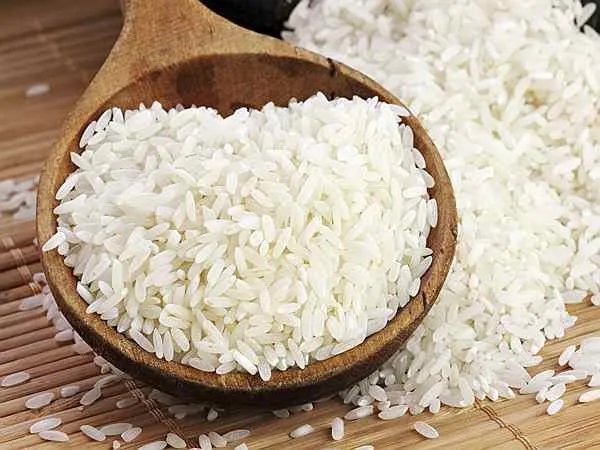
Cooking process:
- Prepare food. Cut the carrots into long strips 5x5 mm thick, cut the onion into thin half rings, cut the meat into large pieces.
- Be sure to rinse the rice 3-4 times until the water runs clear. Usually, after washing the rice for the third time, the water becomes more or less clean.
After washing the rice, soak it in hot water for 20-30 minutes.
*Proceso de cocción:
- Prepara la comida. Cortar las zanahorias en tiras largas de 5x5 mm de grosor, cortar la cebolla en medio aros finos, cortar la carne en trozos grandes.
- Asegúrese de enjuagar el arroz 3-4 veces hasta que el agua salga clara. Normalmente, después de lavar el arroz por tercera vez, el agua queda más o menos limpia.
Después de lavar el arroz, sumérjalo en agua caliente durante 20-30 minutos.*
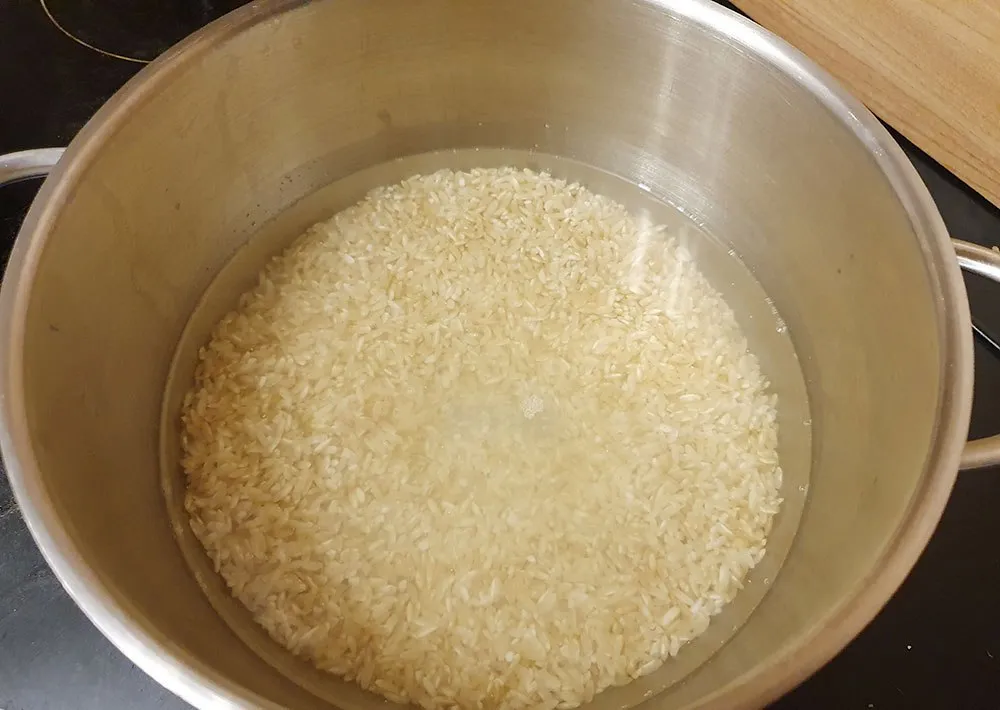
- In a cauldron, we warm up the vegetable oil well.
3. En un caldero, calentamos bien el aceite vegetal.

4.When the oil is hot enough in it, fry the onion until golden brown.
Then add the meat and also fry with the meat gently over medium heat for about 15-20 minutes.
4. Cuando el aceite esté lo suficientemente caliente, fríe la cebolla hasta que esté dorada.
Luego agregue la carne y también fría con la carne suavemente a fuego medio durante unos 15-20 minutos.
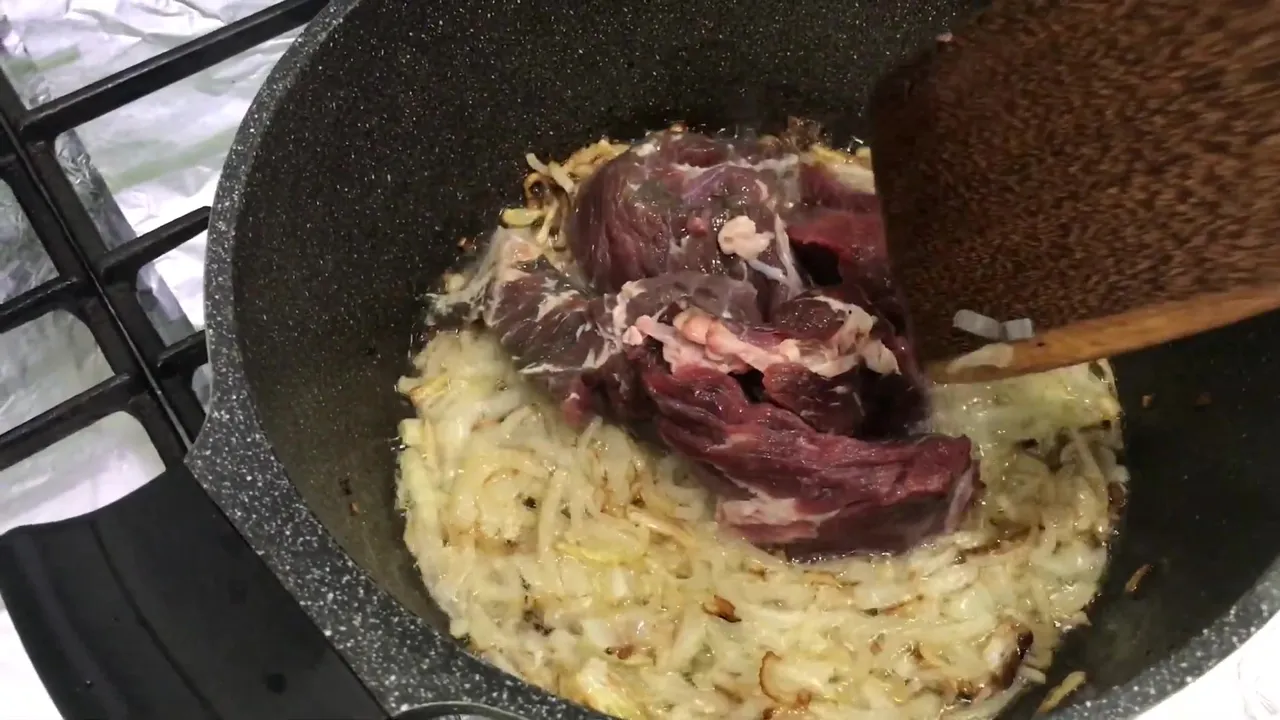
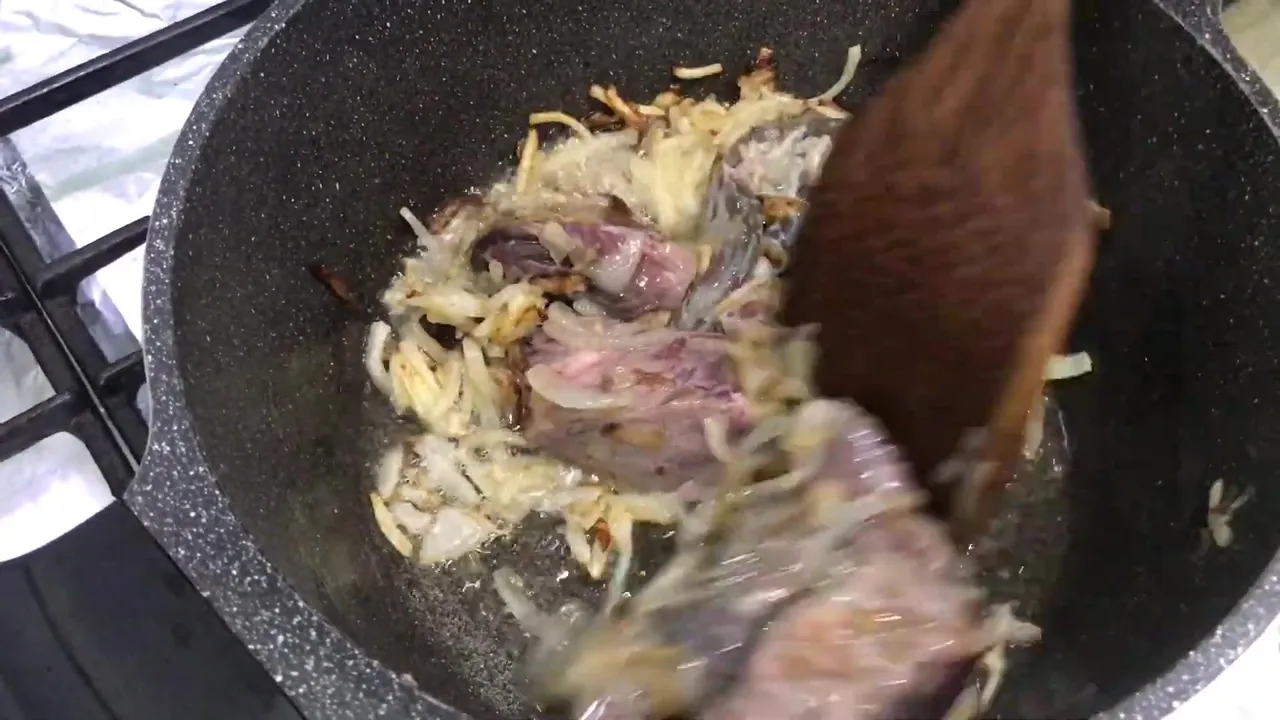
5.Add chopped carrots to the onion and meat, fry until soft, stirring gently so that nothing burns.
5.Agregue zanahorias picadas a la cebolla y la carne, fría hasta que estén suaves, revolviendo suavemente para que nada se queme.
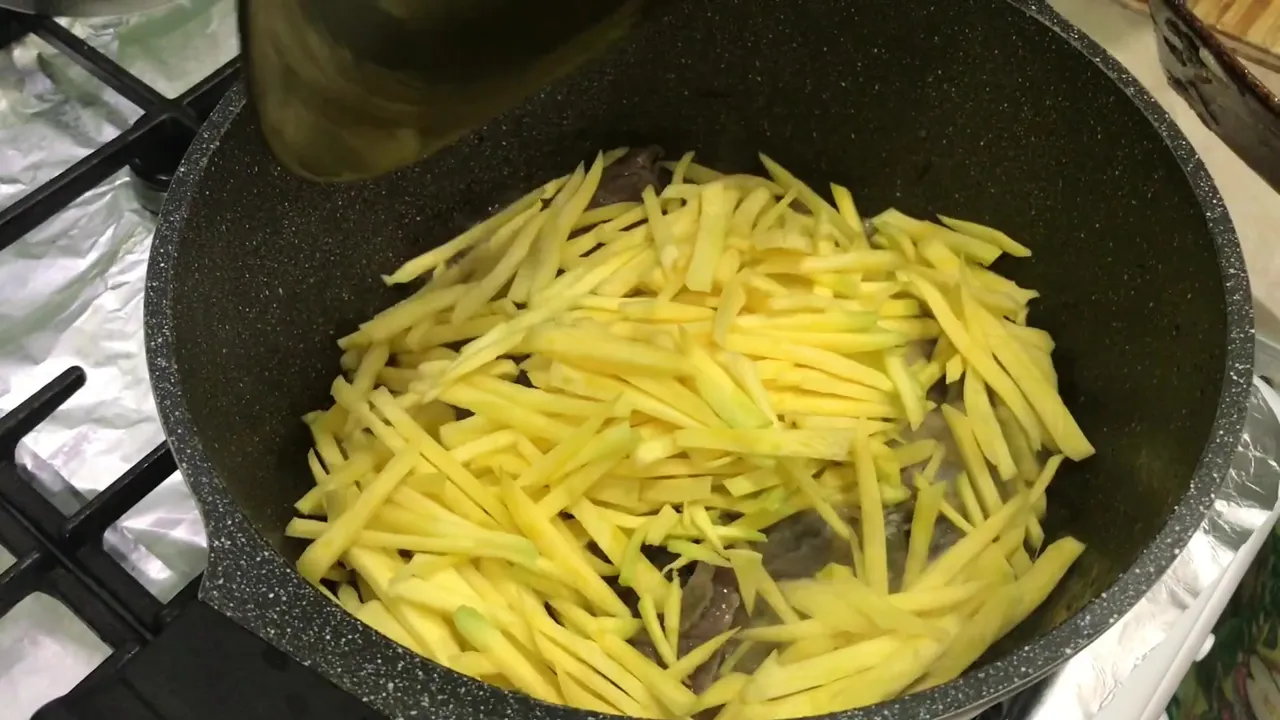
6.Pour vegetables and meat with half a liter of hot water, add 2 tablespoons of salt, zira and turmeric (you can also add 2 heads of garlic, but this is to taste and optional). Be sure to let it boil, then reduce the heat and let the zirvak boil for 30-40 minutes under a closed lid.
6.Vierta las verduras y la carne con medio litro de agua caliente, agregue 2 cucharadas de sal, zira y cúrcuma (también puede agregar 2 cabezas de ajo, pero esto es al gusto y opcional). Asegúrese de dejar que hierva, luego reduzca el fuego y deje que el zirvak hierva durante 30-40 minutos con la tapa cerrada.
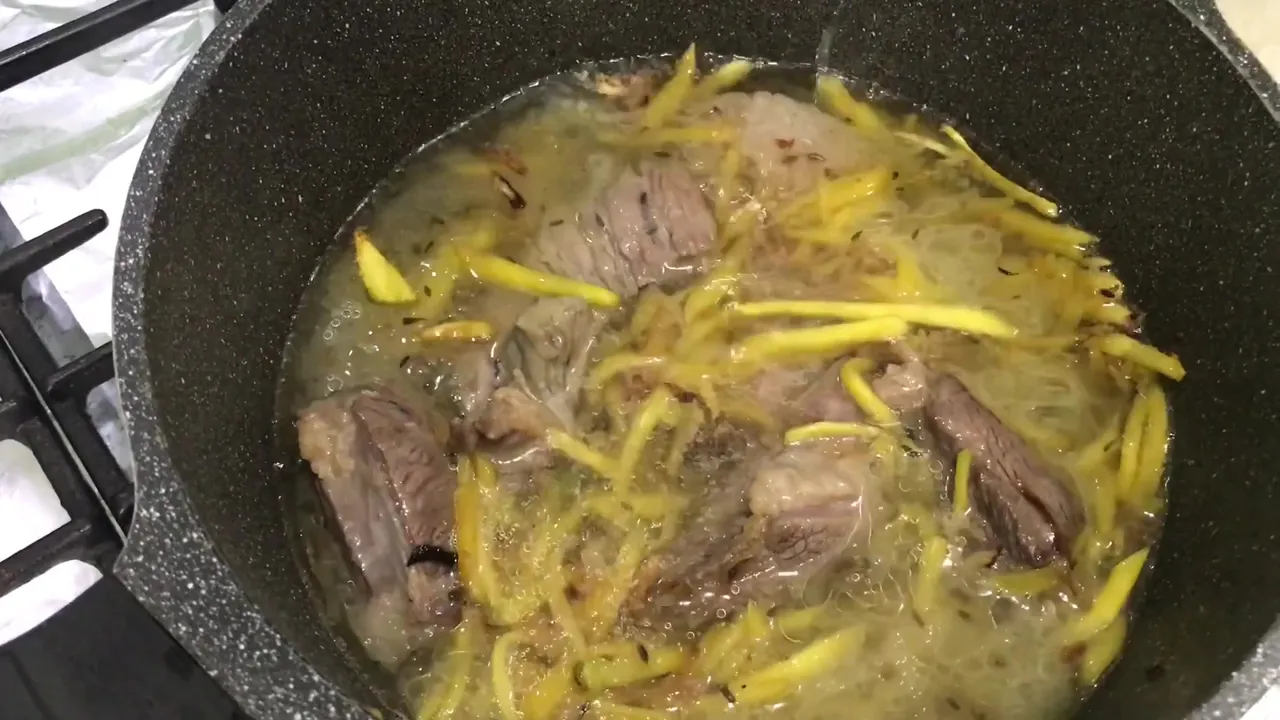
7.The next step will be, put it on top - chickpeas and raisins and rice, smooth it out. Add hot water so that it covers the rice by the thickness of the little finger. Increase the fire, wait until all the water has boiled away and then reduce the fire to a minimum. (And also during the cooking process, make several holes to the bottom of the cauldron every 5 minutes, turning only the rice itself so that the water is absorbed into the rice faster. Repeat this process several times until there is a minimum of water left.
7.El siguiente paso será ponerlo encima: garbanzos, pasas y arroz, alisarlo. Añadir agua caliente para que cubra el arroz por el grosor del dedo meñique. Aumente el fuego, espere a que se haya evaporado toda el agua y luego reduzca el fuego al mínimo. (Y también durante el proceso de cocción, haga varios agujeros en el fondo del caldero cada 5 minutos, volteando solo el arroz para que el agua se absorba más rápido en el arroz. Repita este proceso varias veces hasta que quede un mínimo de agua .
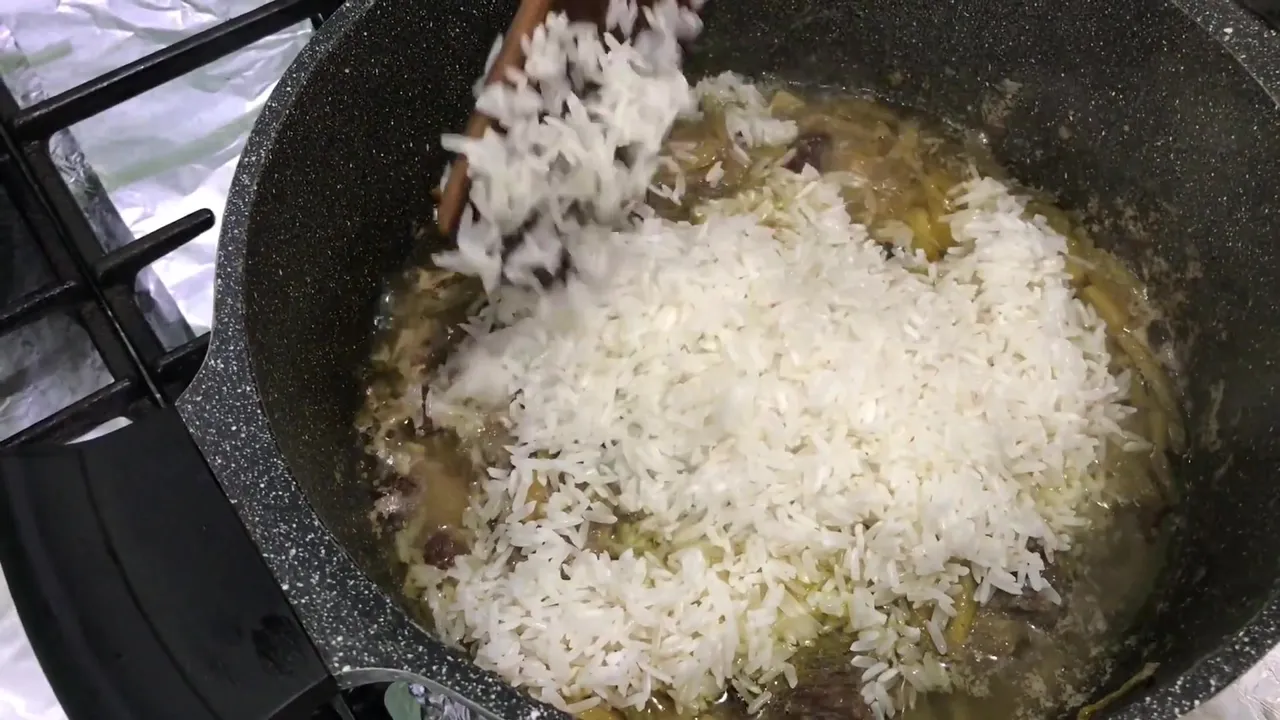
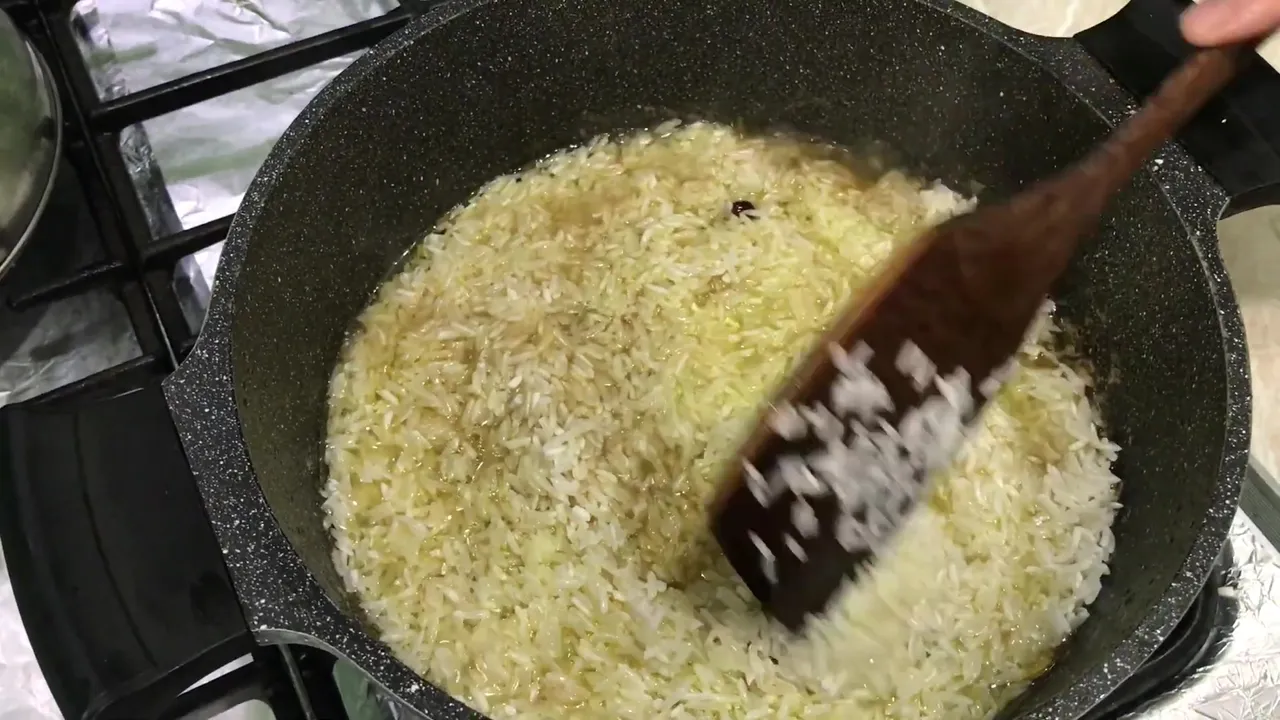
- Collect rice with a slotted spoon in a hill, in the formed hill make 5-6 holes with a knife to the bottom of the cauldron. Close the lid tightly and leave for 20 minutes and at the same time the fire should be at the very minimum.
8. Recoja el arroz con una cuchara ranurada en una colina, en la colina formada haga 5-6 agujeros con un cuchillo en el fondo del caldero. Cierre bien la tapa y déjela durante 20 minutos y, al mismo tiempo, el fuego debe ser mínimo.
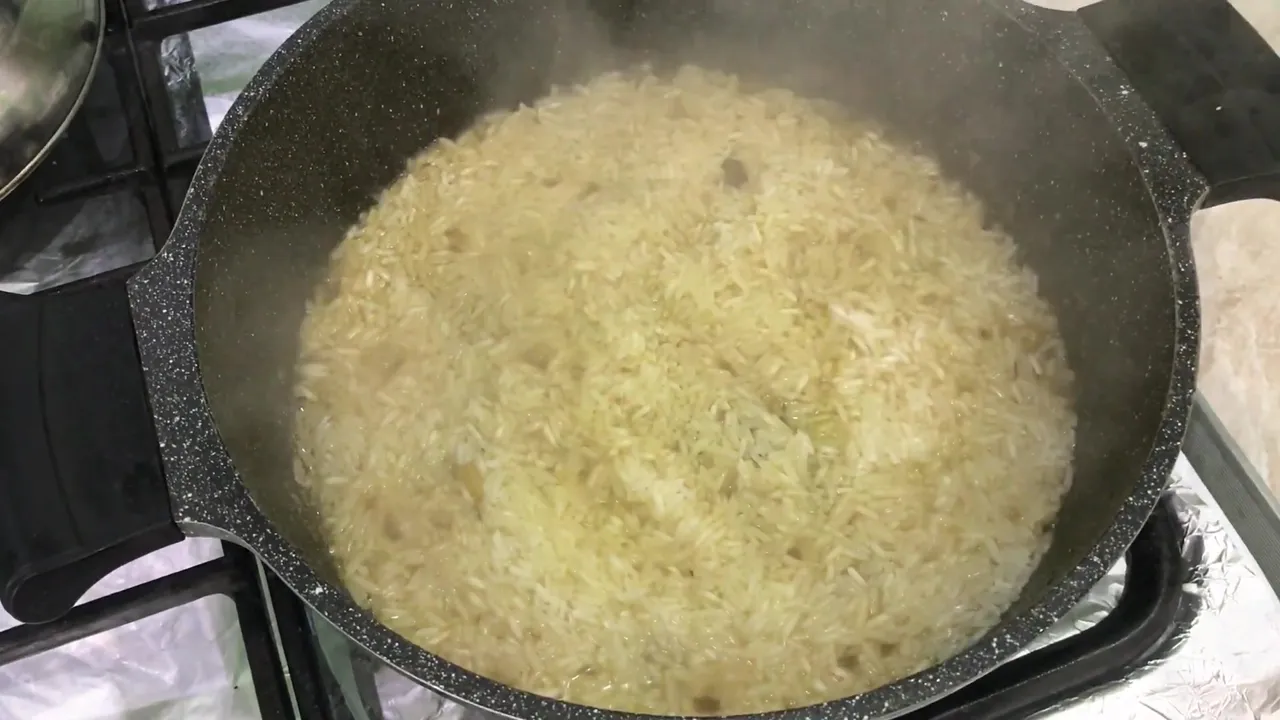
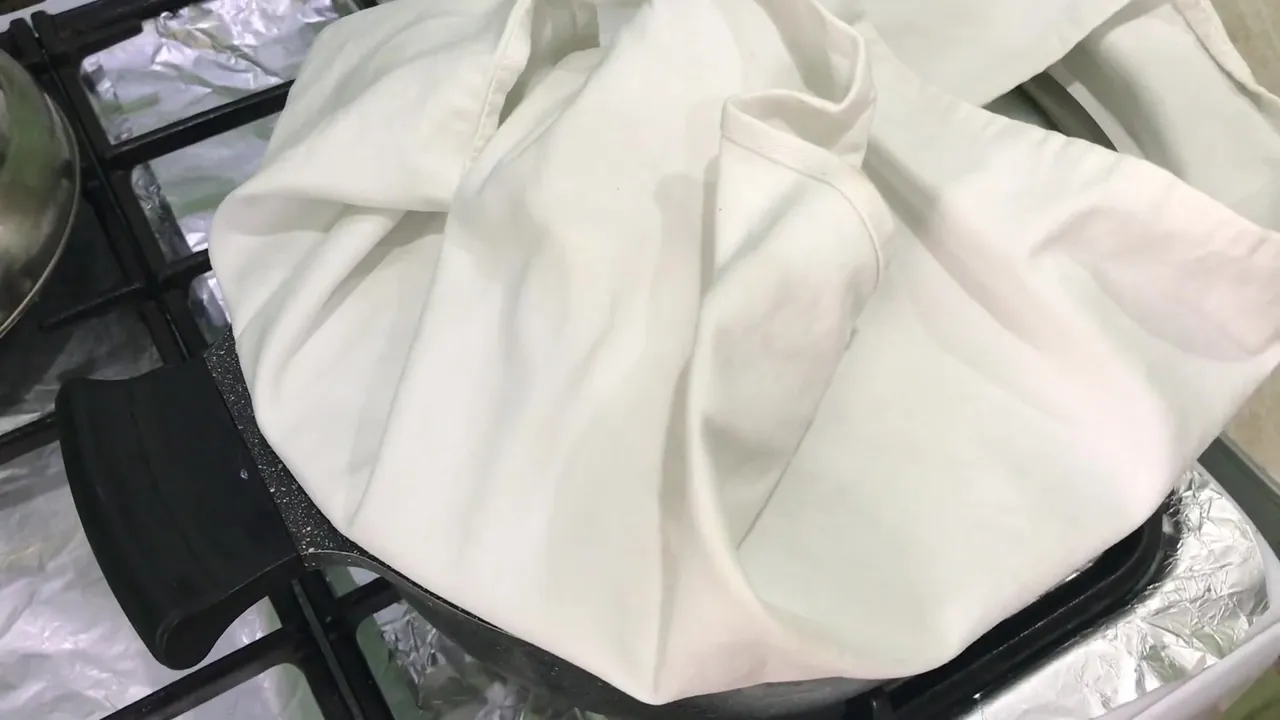
9.After 20 minutes, remove the pilaf from the heat, stir and leave for another 10 minutes, covered with a lid. Then take out the meat, cut it into portions.
Transfer the pilaf to the lagan (large round plate), place the pieces of meat on top. Serve with fresh salad and hot tea.
Bon Appetit!
9.Después de 20 minutos, retire el pilaf del fuego, revuelva y déjelo por otros 10 minutos, cubierto con una tapa. Luego saca la carne, córtala en porciones.
Transfiera el pilaf al lagan (plato redondo grande), coloque los trozos de carne encima. Servir con ensalada fresca y té caliente.
¡Buen provecho!
